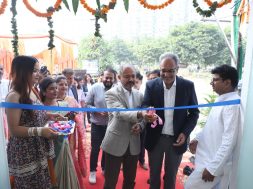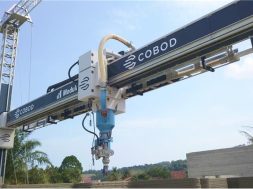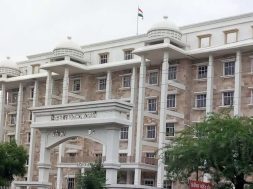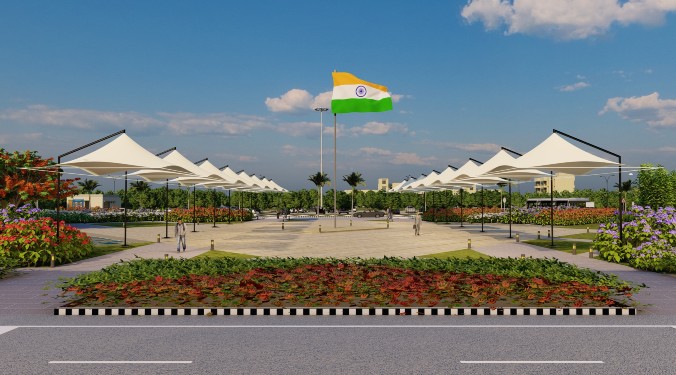“We plan to set up around 10-15 plants in the current fiscal with investment generated out of internal accruals,” says Anil K. Banchhor, Chief Executive, ACC Concrete Business
Holcim-owned ACC Concrete, a major manufacturer of ready-mix concrete, has chalked out an impressive plan to capture the Indian market with product innovation. In a tête-à-tête with Subhajit Roy, Mr Banchhor highlights the company’s significant achievements and aggressive future plans.
Mr Banchhor, how do you look at the market scenario for concrete business as of now?As of now the concrete market in a better shape compared to last year. The growth rate is improving in the metro cities like Bengaluru and Mumbai whereas Delhi NCR region is quite down. The market is expected to grow faster after the first quarter of next financial year.
What is the year-on-year growth you have experienced?ACC Concrete achieved around 23 per cent year-on-year growth which is quite higher than the industry growth. We are expecting a better growth during the current fiscal. We are expanding our business across the country by setting of plants in tier two cities.
How do you see the business opportunities in the road and bridges sector?The requirement of concrete for road sector is typically being met by the road projects developers having their own batching plants. So we have not much significant roles to play. However, we had supplied concrete for Mumbai-Pune Expressway, Indore-Dewas bypass project, and Kolkata and Delhi metro rail projects in the past. We have taken certain new initiatives on the sustainable road development like green concrete that requires less cement as compared to conventional concrete. Green concrete has the better properties like lower abrasion and higher durability as compared to normal concrete roads.
Have you done any pilot project using this type of concrete?Yes, we have done a pilot project in Noida over a 30-metre stretch. We prepared the trial sample with conventional concrete as well as high volume flyash concrete with number of panels with different thicknesses of 200 mm to 350 mm. To check the stress inside the concrete, we have inserted strain gages inside the concrete in different locations: top fibre, middle and at the bottom.
Present concrete design methodology is based on the empirical formulae of Westergaard’s equation and broadburry’s coefficient, which was developed in Europe where temperature is low. However, India being a tropical country, temperature is quite high here. So if we formulate concrete according to the European formulations, the resultant stress would be higher and we may also land up in overdesigning the roads. To address this, we carried out the trial in NCR region and developed the product Ecocrete, whose performance has been found to be better than OPC concrete stretch.
We found that even a lower thickness of road can be made which is comparable with the higher-thickness roads, based on the performance analysis. Today the roads are being constructed in the thickness of 350 mm and 400 mm. We can bring down the thickness with HVFAC based green concrete.
Further, we have also developed UTWT24 (Ultra Thin White Topping) which allows us to achieve superior quality concrete roads on top of existing bituminous roads by using lesser quantity of concrete, and is therefore truly sustainable material.
In general, once completed, bitumen roads can be opened for traffic after few hours, whereas conventional concrete roads can be opened for traffic after 10 to 12 days after curing. However a concrete road made with Speedcrete or UTWT24 can be opened for traffic within 24 hours.
ACC also offers Supercoat which is used for road repairing of existing concrete roads and filling of potholes of bitumen roads wherein roads can be opened to traffic within 8 hours. These products are productivity enhancers that can increase the speed of road development.
What are the advantages of high volume fly ash concrete roads over conventional fly ash concrete? The lesser quantity of cement leads to larger contribution to the environment by limiting CO2 emissions. So optimising the use of cement is the key for sustainable construction. The major advantage of high volume fly ash concrete roads is use of lesser quantity cement while offering superior quality and durability. How do you see the acceptance of high volume fly ash concrete in India?It is increasing nowadays. Private players have accepted the concept of high volume fly ash concrete for road building quite proactively. For example, HCC has used high volume fly ash concrete while constructing the iconic Bandra-Worli Sea Link.
Though, many government agencies were reluctant initially, now the scenario has started changing. Road Minister Nitin Gadkari is propagating the ideas of exploring new technologies and new materials for road building so that we can reduce the costs and improve efficiency. All relevant government agencies and industry bodies have to come up with new ideas to support the government’s new mission.
Where do you see the ACC Concrete Division in next 5 years?ACC and Lafarge are part of Lafarge Holcim in India. ACC and Lafarge, both put together, will be the biggest ready-mix concrete (RMC) player in India. We would continue to expand and maintain our leadership position.
Could you name some of your products that can speed up road and bridges building?Concrete normally can achieve the strength in 28 days. However, we can achieve the same strength of concrete just in 7 days using ACC-Jet-setcrete. This type of concrete has self-levelling features which help to achieve desired strength within a short span of time.
ACC also offers a self compacting concrete namely Flowcrete which is used in structures wherein congested reinforcement are unavoidable. This also reduces manpower costs since external compaction equipment is not required.
What are the innovations happening in ACC at the moment? By when will the products be available?To meet the market demand, our innovations are focused multipronged which include increased productivity, faster delivery, better aesthetics and of course at reduced cost.
On this note, we are developing the pump-and-gun application of mortar for the plaster work. We have developed ACCOFIX which helps to speed up the fixing of blocks.
We also have readymade plasters. One needs to just cut it and put it in the machine and then spray the plaster.
We have already launched some of these products in markets like Mumbai and Delhi. We’ll also be launching these products in Kolkata and Bengaluru shortly.
What is the production capacity of ACC concrete as far as RMC is concerned? What will be your expectation in terms of revenue growth?To meet the current market demand, right now we are producing 24 lakh cubic metres concrete per year though the production capacity is much higher. We expect robust growth in the next year.
9
Cookie Consent
We use cookies to personalize your experience. By continuing to visit this website you agree to our Terms & Conditions, Privacy Policy and Cookie Policy.









